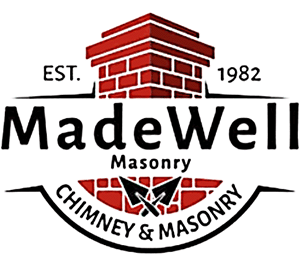Homeowners are often surprised to find out that their chimney had a fire that they didn’t know about. Most chimney fires are quiet and slow burning. The only sign is the damage that is left behind.
Quiet, slow-burning chimney fires are usually caused by either a stray spark or high temperatures that ignite creosote buildup in the chimney. Creosote is a highly combustible substance that often looks sticky and tar-like. It is produced by burning wood. If there is a large amount of creosote, it can burn for a long period of time and reach extremely high temperatures that can cause severe damage to the chimney system and to your home. The damage can include: a) cracked or collapsed tile flue lining; b) warped or damaged metal flue lining; c) melted mortar; d) melted or damaged roofing; and, e) heat damage to ceilings, walls, or structural beams near the chimney
The most dangerous consequences of a chimney fire are the opportunity for carbon monoxide to enter your home and it increases the chance of a future house fire. A chimney fire can cause a flue linking to warp or create cracks in the tile flue lining potentially resulting in carbon monoxide poisoning.
It is important to have your chimney inspected at least once a. In the period between your last inspection, a great deal can occur. If you don’t recognize the warning signs, you could unknowingly put your home and family at risk. That is why the Chimney Safety Institute of America (CSIA) compiled the following list of 9 indicators of a chimney fire that homeowners can spot.
Signs You Had a Chimney Fire
-
Shards or flakes of creosote on the ground, around the roof or in the firebox
-
Pieces of creosote that look puffy or like honey comb
-
Broken or cracked pieces of flue tiles
-
Damaged or melted roofing material
-
A discolored or disfigured chimney cap/rain cap or chase cover
-
Cracks in the masonry on the outside of the chimney
-
Heat damage to a TV antenna or dish
-
Warped metal components like a metal damper, smoke chamber connection pipe, flue liner, or factory-built chimney
If any of these indicators are noticed, you should reach out to MadeWell Masonry to have your chimney professionally inspected. We use special equipment to get a close look at your chimney to determine the extent of the damage and let you know the best course of action for repairs.
You can always count on a high level of professionalism and customer care from our team. Give us a call, we are here to serve you!

Recent Comments